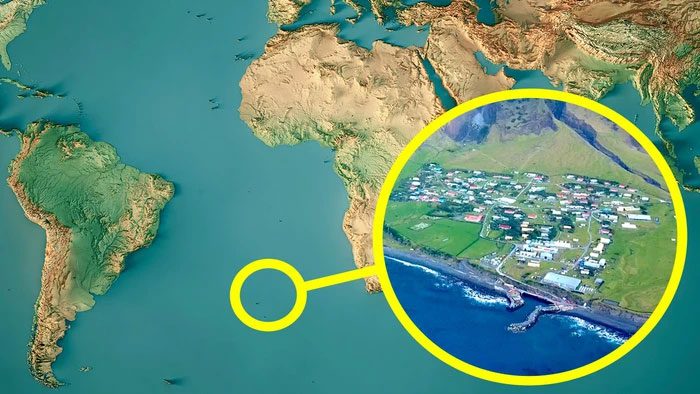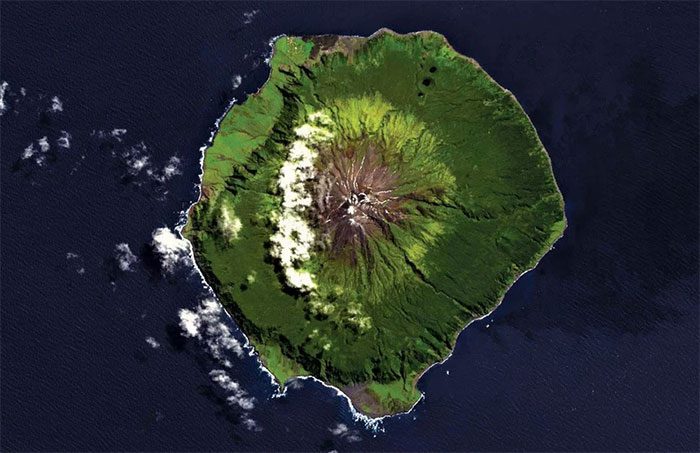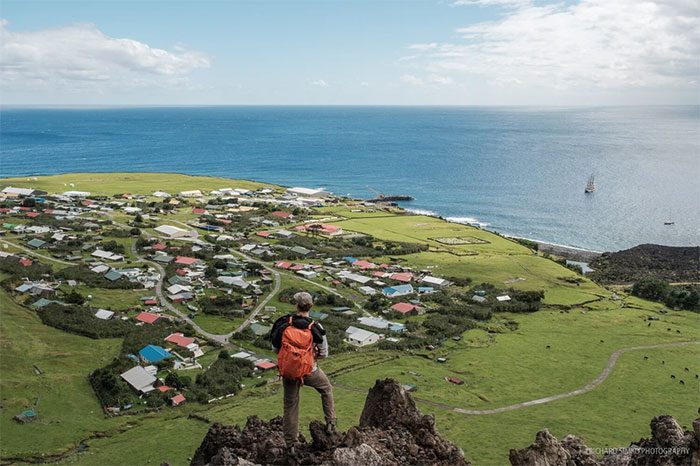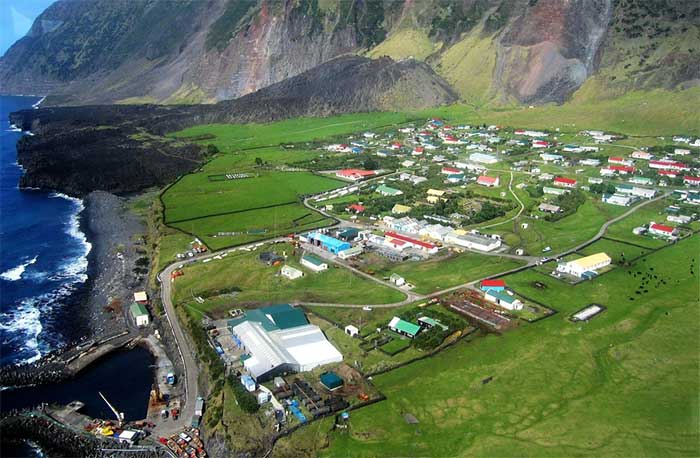There is no airport on Tristan da Cunha, so if you want to get there, the only way is by boat from South Africa, which takes about a week.
Tristan da Cunha is one of the most remote human settlements in the world, located approximately 2,430 km from the nearest inhabited island, Saint Helena, around 2,816 km from the nearest continental landmass, South Africa, and about 3,360 km from the South American mainland.

The archipelago covers a total area of 207 km2 and includes the main island of Tristan da Cunha and several smaller islands. Tristan da Cunha is a volcanic island, with its highest point being Mount Honecker at an elevation of 2,062 meters.
The Tristan da Cunha archipelago, along with Saint Helena and Ascension, is a British Overseas Territory first discovered by the Portuguese explorer Tristan da Cunha in 1506.
Tristan’s adventures have added historical significance to this remote island. Upon his return home, Tristan reported his findings to Manuel I and Pope Leo X, garnering international acclaim.

Here, the civilized technological life, the worries, and stresses of modern society fade away, replaced by a close and wild natural life. Due to its complete isolation from the rest of the world, with the only transportation to the island being by ship, only truly adventurous and bold travelers dare to visit. Consequently, the scenery remains pristine, with gentle slopes and narrow valleys stretching from the mountain peaks down to the coast, formed by past volcanic eruptions.
Records indicate that the first successful landing on the archipelago may have occurred in 1520, when a ship led by the Portuguese Ruy Vaz Pereira anchored at Tristan Island to replenish fresh water.
In the following century, the Dutch frequently visited the island, conducting numerous explorations and surveys, and created the first rough map of the area in 1656. In 1767, a small French frigate undertook a comprehensive three-day expedition on the island. Until the 19th century, the island remained uninhabited.
The first settlers came from Massachusetts, USA, led by Jonathan Lambert, who arrived in December 1810. He and two others renamed the island to “Island of Supply” and claimed it for themselves. By 1812, only one of the three settlers, Thomas Currie, survived as the sole farmer on the island.

The only town on Tristan da Cunha – Edinburgh of the Seven Seas – is built on flat land more than 2,000 m from the summit of the Queen Mary volcano on the main island of Tristan. The town was named Edinburgh after a visit by the first Duke of Edinburgh in the 1800s, although the residents commonly refer to it as The Settlement.
In 1816, Tristan da Cunha became a British territory under the jurisdiction of Cape Town, South Africa. This move aimed to prevent the French from using the archipelago as a base to attempt to rescue Napoleon Bonaparte, who was being held on the nearby island of St. Helena. After the British occupied Tristan da Cunha in the early 19th century, they established the only settlement, “Edinburgh of the Seven Seas,” on the northern part of the main island. The British built infrastructure here to provide a place for residents to live and interact.
In 1961, a serious volcanic eruption caused earthquakes and landslides, forcing the island’s residents to evacuate to England. However, after geologists confirmed it was safe, a new migration back to the island took place, this time most of the returning residents were those who were reportedly tired of city life and sought a quieter place.
The people here live self-sufficiently, enjoying tranquility and closeness to nature, building a life with fewer burdens and worries than in urban areas. The archipelago is home to many bird and marine species, with the main industries being fishing and livestock farming, making Edinburgh of the Seven Seas gradually become the central city of Tristan da Cunha.

The residents of Tristan are all farmers. They grow their own food and fish. The land is communally owned, but each family has a plot to grow potatoes. They raise livestock and fish for seafood, especially land and sea prawns, which are the main source of income for the islanders.
As of January 2017, the total permanent population on the main island was 262 people, primarily of British and Saint Helen descent. Tristan da Cunha is not a suitable tourist destination, as the island only has basic facilities, a hospital, a church, and a pub. Apart from these, there is an endless solitude, making it unsuitable for those who enjoy a lively atmosphere.
Besides the main island, other islands only have temporary weather station staff living on them; perhaps the island will become lively on December 5, 2048. Calculations suggest that the archipelago will experience a total solar eclipse lasting nearly 3.5 minutes on that day. And this might attract many astronomy enthusiasts to the island.


















































